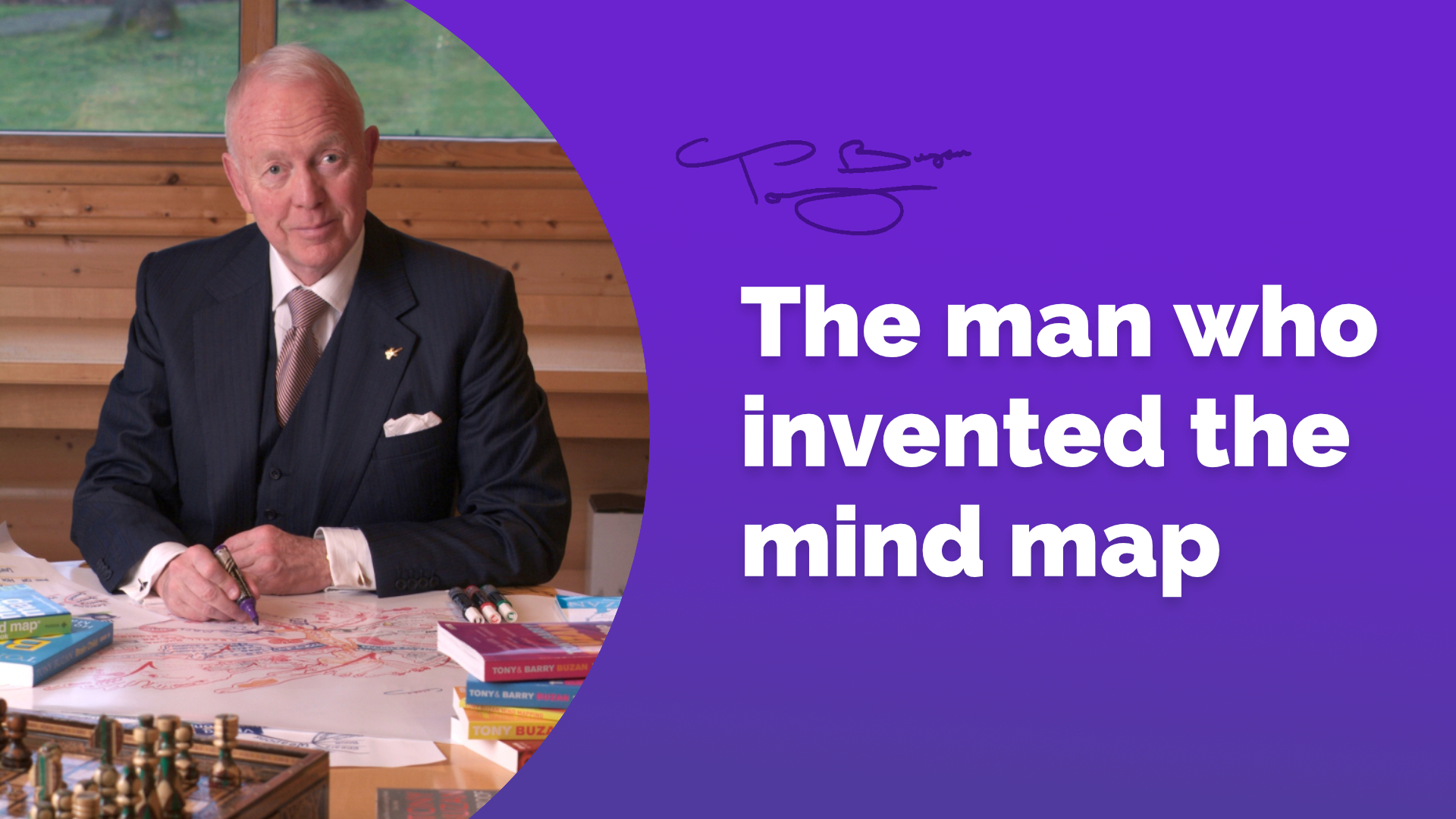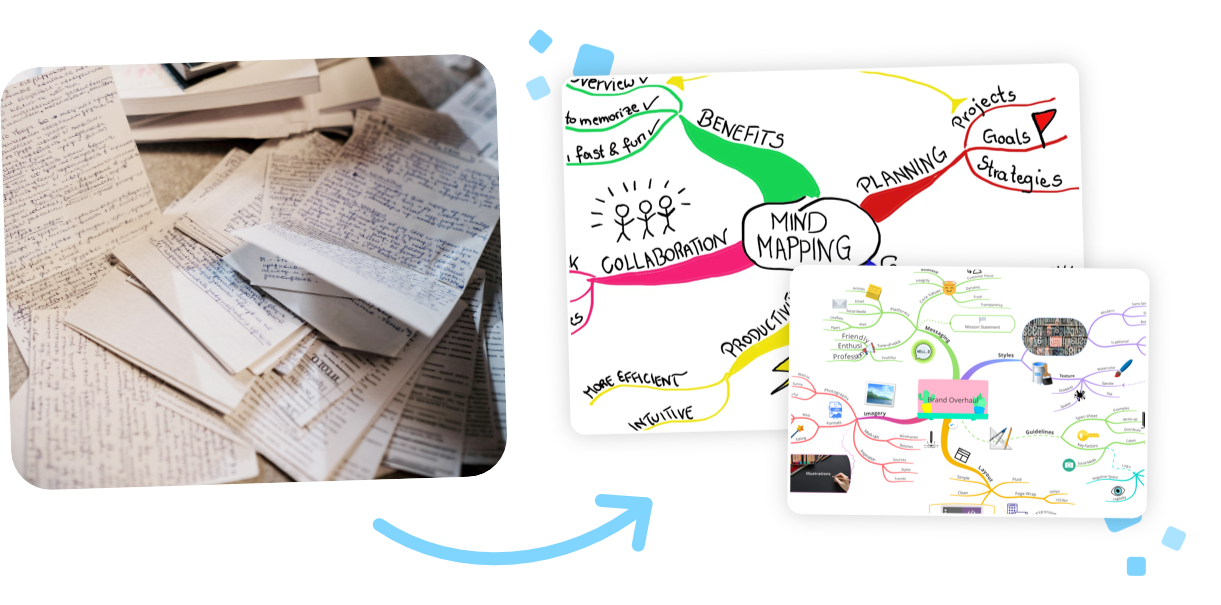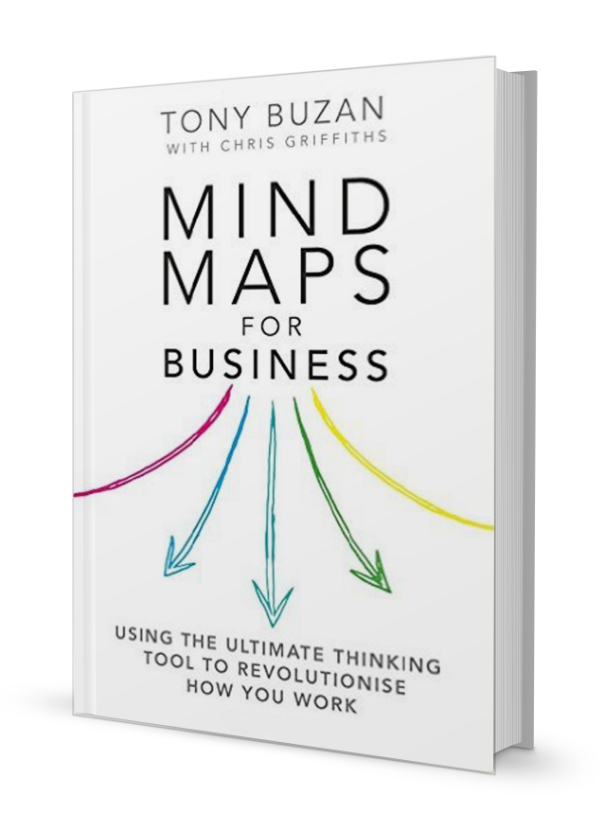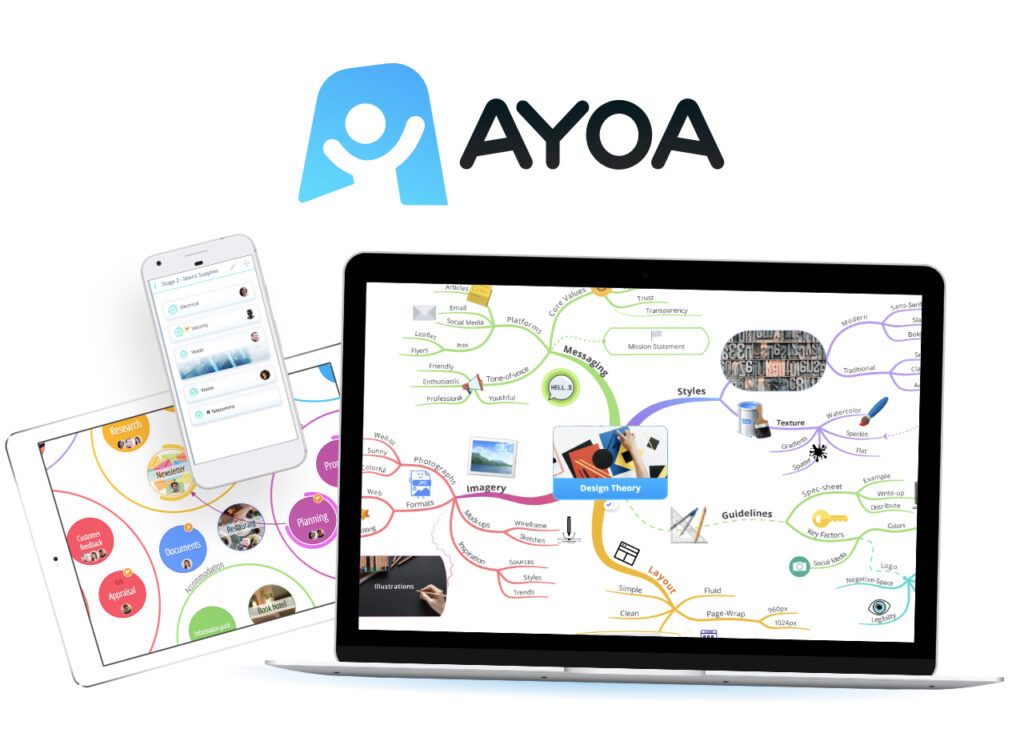October 2, 2024
Tony Buzan: The Man Who Invented the Mind Map

Tony Buzan is not a name you’ll find in lists of 20th-century revolutionary thinkers. And yet Buzan transformed the way tens of millions of people worldwide think about learning, creativity and problem-solving – by inventing a new way to visualise information called mind mapping.
The Birth of Mind Mapping
Tony Buzan’s creation of mind mapping was a response to his dislike of linear note-taking as a student in the 1960s at the University of British Columbia. He started piecing together a system by which to capture and organise information from his classes, drawing from the work of cognitive scientists and the composition of the human brain itself.
Buzan realised the brain doesn’t think in linear bullet-point lists. It creates complex webs of association that allow it to link ideas in multiple directions, all at once. He developed visual note-taking techniques that mimicked these brain processes.
The result was that he produced the mind map – a radial diagram of ideas, words or other items – that employs curved lines, colour and images to convey a visual hierarchy of information, communicate it more easily, retain it in memory, and stimulate the generation of subsequent ideas.

Spreading the Word
Buzan’s invention spread rapidly. In 1974, he published his first book on the topic, Use Your Head, which brought mind mapping to public attention. Then he produced The Mind Map Book (1993), an international bestseller that made mind mapping a global phenomenon.
But Buzan didn’t confine himself to writing books. He was a fiery speaker and trainer, and for the next two decades he travelled the world teaching his techniques. He founded the World Memory Championships, and the World Speed Reading Championships.
Our Collaboration
I first met Tony in the late 1990s, starting a relationship that would last more than two decades. We were both passionate about helping people enhance their mental abilities. We recognised the power of technology to augment mind mapping.
Together, we set up a project, ThinkBuzan, to train people in mind mapping techniques. We developed a network of more than 1,000 licensed trainers worldwide. Tony’s methods have been taken into companies, schools, and homes.
One of our most fruitful collaborations was the creation of iMindMap software. While hand-drawn mind maps had power, digital mind maps would offer greater flexibility and functionality. iMindMap took Tony’s techniques into the digital world. iMindMap was translated into 19 languages and at one point became the number one selling product on Amazon in Japan – even above computer games like Call of Duty!
When I worked with Tony, it was always like drinking from a firehose. He was an insatiably curious and creative learner, and his infectious enthusiasm for people and how to help them think and learn was inspiring. Forbes ranked him as one of the world’s top 5 speakers. I was also honoured to co-author ‘Mind Maps for Business’ – which was Tony’s 100th book.

His Legacy Continues
Sadly, Tony died in 2019, but his legacy endures. Mind mapping continues around the world being used for learning, business, and personal development. It’s taught in schools, used in boardrooms, and used by millions of individuals.
The Power of Visual Thinking
What was it about Tony’s invention that made it so potent? At its heart, mind mapping is about the brain’s preference for processing visual information – we process visual information 60,000 faster than text, and remember visual information six times longer than information that we’ve read or heard.
This is the power of mind maps, which continue to be useful because they offer two ‘windows’ into the same thing at once: the abstract and the concrete. One is a spider’s web of ideas, visualising the concept. The other is a picture of the concept, showing details and relationships. They help us see the whole picture and the details together. This helps us understand complicated topics and also generate new ideas.
However, mind mapping is not just about better recall and comprehension. Through the visual representation of ideas, mind maps promote creativity and innovation. Working non-linearly, mind maps help us connect ideas in novel ways that produce the ‘eureka’ moments central to innovation.
Mind Mapping in the Digital Age
Although Tony had invented mind mapping as a pen-and-paper system, he swiftly moved towards technology, and saw that digital tools could enhance mind mapping in several ways:
- Ease of editing: Digital mind maps can be easily reorganised and updated.
- Images, video and links: the mind map can include images, video and links.
- Collaboration: Multiple people can create and edit a digital mind map in real time.
- Portability: Digital mind maps can be accessed from any device, anywhere.
This has only increased the power and flexibility of mind mapping, expanding its uses in personal and professional settings. Frustratingly for Tony, the majority of digital tools claiming to offer mind mapping actually did not mirror his process. They could not provide the flexibility or freedom of drawing the maps by hand, which produced a much stronger connection with the brain.
The Future of Mind Mapping
Tony invented mind mapping and hence transformed the very concept of thinking. I was privileged to work as CEO of ThinkBuzan with Tony many years, and to witness the effectiveness of his methods and the enthusiasm with which he approached his work.
The core principles of mind mapping – visual thinking, association and hierarchy – are as relevant today as they were when Tony first developed them. For me, what we are seeing now is a combination of these core principles with cutting-edge technology to open up new horizons for creating, capturing and organising ideas.
Tony has already changed the lives of millions, and the more we continue to develop and share these techniques, the more people we will empower to think better, learn faster, and unlock their creative abilities. The mind map revolution that Tony began is far from over – in many ways, it is just beginning.

With our ayoa.com app, we’re taking Tony’s work even further, combining mind mapping with task management and artificial intelligence (AI), and building a tool for thinking and productivity that encompasses all aspects of human creativity – one that evolves to unlock mental potential as we evolve. Mapping into the future, while always staying true to Tony’s original vision of helping people become better optimised versions of themselves, Ayoa is the only app in the world that enables true organic mind maps.
Nearly one million people have watched the following video. Why not join them and hear from Tony himself . . .
